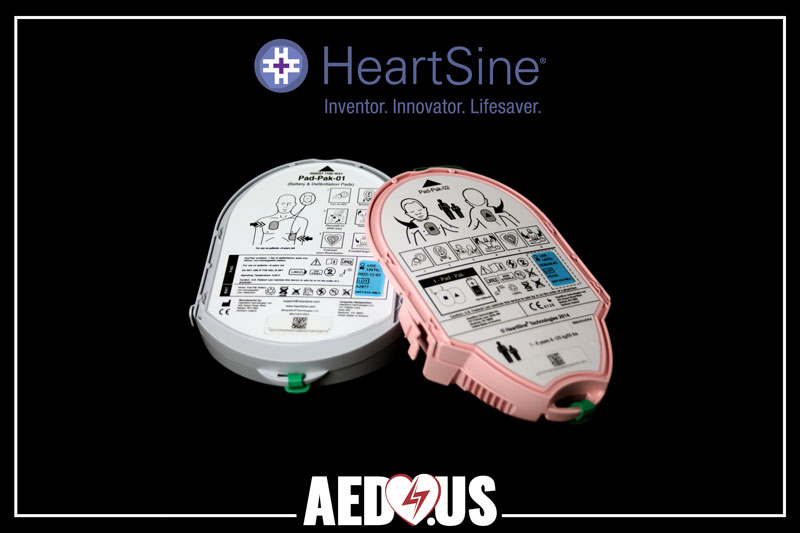 Most AEDs have separate pads (electrodes) and a battery.
Most AEDs have separate pads (electrodes) and a battery.
Pads and batteries rarely expire at the same time. For example, Cardiac Science boasts a 4-year battery, while pads are usually good for at least 2 years. The life of the battery will vary based on usage and environment. If an AED is used by a first responder, like law enforcement, the device may be discharged several times in the course of a year, while an AED hung in an office building may never be used. That AED in the patrol car will be subjected to wild swings in temperature, which will affect the battery’s life. Even if all conditions are constant and the device is never used, the pads may have a different expiration date. All these factors contribute to different disposables having different dates that must be tracked to maintain compliance. Throw in AED pediatric pads and you have yet another date to track.
ZOLL has their CPRd pad that provides CPR coaching and has a 5-year expiration date.
The ZOLL AED Plus also uses consumer lithium 123 batteries that will last 5 years in ideal conditions. If you were able to get pads with exactly 5 years of life left on them, you could conceivable switch out both the adult CPR-d pads and batteries at the same time. If you go with the ZOLL Pedi-Padz II, they will only have a ~24-month useful life, so you are still back to tracking multiple expiration dates.
Heartsine has a unique solution to this issue: a combined battery/pad pack that expires at the same time and is single use.
The Pad-Pak can be used on both adults and children, but you will need two separate Pad-Paks. The Pediatric-Pak is for use on kids weighing less than 55 pounds (or less than 8 years of age). The difference between the Adult and Pediatric-Paks is the Pediatric-Pak reduces the energy delivered, making it suitable for younger victims.
Both the Adult and Pediatric Paks come with a 4-year life. If measured by the number of shocks, these Pad-Paks will deliver 60 shocks or 6 full hours of monitoring the patient. After being in this industry since 1999, we have never heard of a patient being shocked anywhere close to 60 times. These Pad-Paks are single use, so after an event, you start all over with a brand new one.
During the Heartsine Samaritan’s regularly scheduled self-test, the unit will give an audible beep if the battery senses it is at a level below being able to deliver 10 shocks.
The Adult Pad-Paks are grey in color, while the Pediatric-Paks are pink. This color coding easily differentiates the two.
 Written by Blaire Czarniecki
Written by Blaire Czarniecki
Customer Service Director
Fact checked by Phillip Woods, BA, NREMT-P, FP-C
Blaire attended the University of Tennessee where she graduated with a Bachelor of Science in Human Ecology- Child and Family Studies. She has been in the Automated External Defibrillator (AED) industry for over eight years and is the Director of Customer Service for Coro Medical. Blaire is also an American Red Cross-certified CPR/AED/First Aid Instructor, highly trained by each manufacturer on their specific AEDs, and knowledgeable regarding ALL State AED regulations and legislation.
“I know that every day I come to work, I am playing a part in saving someone’s life. I am passionate about these devices and am always looking for new and innovative ways to spread awareness and knowledge about Sudden Cardiac Arrest (SCA). I look forward to the day when everywhere I go, I will see an AED—when SCA will no longer take any lives.”
Last updated October 23, 2018





